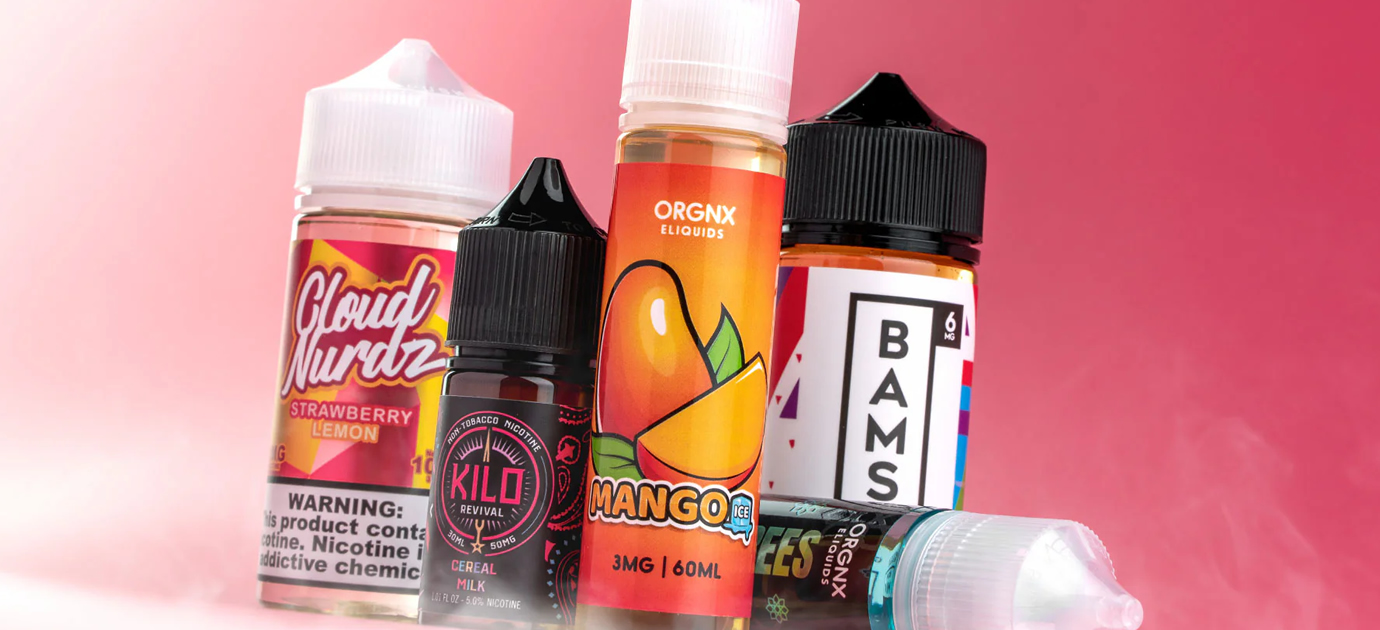
Breaking Free from 5% Nicotine Vaping
2025-08-20
5% nicotine eliquid/ 3% nic juice/ freebase nicotine eliquid/ nicotine salts eliquid/
If you’ve found yourself asking, “How do I stop vaping 5% nicotine?” you’re far from alone. At 50mg per milliliter, this high-strength nicotine can create a relentless cycle of cravings, making it feel like a constant need to vape.
If you’ve found yourself asking, “How do I stop vaping 5% nicotine?” you’re far from alone. At 50mg per milliliter, this high-strength nicotine can create a relentless cycle of cravings, making it feel like a constant need to vape. What might have started as a way to quit smoking can easily turn into a habit that takes a toll on your health. But understanding the science behind the addiction, navigating withdrawal, and choosing the right strategy can help you regain control.
Why 5% Nicotine Is So Hard to Quit
The addiction to 5% nicotine isn’t just about strength—it’s about how the nicotine is designed. Most 5% vapes use nicotine salts, a modified form of nicotine that enters the bloodstream much faster than the traditional freebase nicotine in older e-juices. This form is smoother to inhale even at high concentrations, letting you take longer, deeper puffs without that harsh throat burn. As a result, it’s easy to consume large amounts without realizing it.
To put it in perspective: A 5% vape contains roughly 50mg of nicotine per milliliter—about the same as (or even more than) a full pack of cigarettes. But unlike cigarettes, which burn out, a 5% vape lets you take hundreds of hits nonstop. It’s also discreet, fitting into every part of your day: waking up, working, driving, scrolling your phone. This constant access leads to repeated surges of dopamine in the brain, rewiring its reward system over time. Soon, you’re not vaping because you enjoy it—you’re doing it to avoid the discomfort of not having it.
Research from the National Institute on Drug Abuse shows nicotine activates brain regions linked to other addictive behaviors, like gambling or overeating. The more you stimulate these pathways, the stronger they get—and with 5% nicotine, that stimulation happens quickly and often. Add in the social acceptance and ease of hiding high-strength vapes (no smoke breaks, no stigma), and it’s easy for occasional use to slide into compulsion, until reaching for the device becomes second nature.
Quitting 5% nicotine means breaking more than a habit: it’s untangling a chemical loop, a mental routine, and even a lifestyle. But the brain is adaptable. Once nicotine is removed, those dopamine pathways slowly reset, and cravings start to lose their hold.
Navigating Withdrawal from 5% Nicotine
Stopping a 5% nicotine vape will trigger both physical and mental pushback. Common withdrawal symptoms include:
- Intense cravings for nicotine
- Headaches
- Restlessness or irritability
- Trouble sleeping
- Mood swings or low moods
- Difficulty focusing
These symptoms peak in the first 3–5 days. While physical discomfort eases after that, mental cravings can linger for weeks or even months. The biggest challenge? Managing that automatic urge to reach for the vape, even when you don’t need it.
Tapering vs. Cold Turkey: Choosing Your Path
Some people quit “cold turkey”—stopping entirely overnight—and succeed. But many find more success with tapering: gradually lowering nicotine levels before quitting for good.
A typical 6-week tapering plan might look like this:
- Week 1: Track and limit daily puffs to build awareness.
- Week 2: Switch to 3% nicotine juice.
- Week 3: Mix 3% and 2% juices to ease the transition.
- Week 4: Use only 2% juice.
- Week 5: Switch to zero-nicotine e-juice.
- Week 6 (optional): Let go of the device entirely, replacing it with new routines.
There’s no “better” method—what matters is what fits your habits. Tapering softens the blow, reducing nicotine slowly to ease withdrawal. Cold turkey, if you can handle it, jumpstarts the healing process, shortening the detox timeline. Some even blend both: taper for a few weeks, then quit fully once nicotine levels are low.
Supporting Your Quit with Health Habits
Your body works hard to recover from nicotine’s grip. Supporting it with nutrition, sleep, and movement can make a big difference.
- Nutrition: Foods like bananas, eggs, almonds, and leafy greens naturally boost dopamine, helping curb cravings. Staying hydrated flushes toxins and eases withdrawal headaches.
- Sleep: Nicotine disrupts your sleep cycle, so prioritizing rest is key. Try a consistent bedtime and cutting screen time before bed to help your body reset.
- Movement: Even light exercise—like a walk or stretch—boosts mood and eases anxiety, a common trigger in early withdrawal.
How Long Does Detox Take?
Physically, nicotine leaves your system in about 72 hours. Mentally, recovery takes longer:
- Days 1–3: Physical withdrawal peaks.
- Days 4–7: Cravings shift from physical to psychological.
- Weeks 2–4: Energy levels stabilize, and mood evens out.
- By day 90: Your brain starts forming new, healthy pathways.
Real change often takes 12 weeks. It’s tough at first, but every step forward is progress.
What Happens If You Don’t Quit?
Sticking with 5% nicotine might feel easier in the short term, but the costs add up. Your brain builds tolerance, needing more nicotine to get the same effect—leading to heavier use. Over time, this can raise your heart rate, blood pressure, and make breathing harder. Financially, the cost of constant disposable vapes can easily add up to thousands of dollars.
The longer you wait, the deeper the habit takes root. But the moment you decide to change—even just exploring the idea—you’re taking back power.
Your 30-Day Quit Roadmap
Here’s a simple plan to guide your first month:
- Days 1–3: Drink plenty of water, note what triggers cravings, and use distractions (like a walk or hobby).
- Days 4–7: Focus on sleep, move your body daily, and eat balanced meals.
- Week 2: Shake up your routines—replace vaping moments with new habits (e.g., chewing gum, sipping tea).
- Week 3: Try journaling to process feelings, or join a support group for accountability.
- Week 4: Celebrate one month vape-free—you’ve earned it.
Breaking free from 5% nicotine isn’t easy, but it’s possible. With the right tools, support, and patience, you can reclaim control and build a healthier, vape-free life.

